Centers & Labs
Research Centers & Laboratories | Shared Resources
Supporting facilities at both Marquette University and the Medical College of Wisconsin, the Joint Department of Biomedical Engineering features over 30 state-of-the-art laboratories dedicated to innovative research and student enrichment. In addition, faculty, students and collaborators have access to a variety of shared resources supported by both institutions, as well as partner institutions in Milwaukee and Southeast Wisconsin.
Research Centers & Laboratories
Advanced Ocular Imaging Program
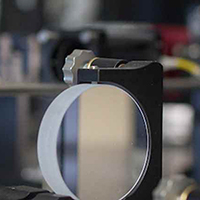 Led by Dr. Joseph Carroll, the Advanced Ocular Imaging Program (AOPI) promotes the development and implementation of translational ocular imaging tools such as optical coherence tomography and adaptive optics scanning light ophthalmoscopy. AOIP seeks to develop imaging tools, software, and methodologies that enable earlier detection of ocular and systemic disease, as well as more precise disease classification.
Led by Dr. Joseph Carroll, the Advanced Ocular Imaging Program (AOPI) promotes the development and implementation of translational ocular imaging tools such as optical coherence tomography and adaptive optics scanning light ophthalmoscopy. AOIP seeks to develop imaging tools, software, and methodologies that enable earlier detection of ocular and systemic disease, as well as more precise disease classification.
Technical Themes: Biomedical Imaging | Medical Devices & Bioinstrumentation
Clinical Applications: Vision, Neuroscience
Lab Director: Dr. Joseph Carroll
BME Collaborator(s): Dr. Robert Cooper
Airway Biomechanics Laboratory
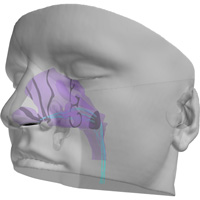 Led by Dr. Guillherme Garcia, the Airway Biomechanics Laboratory, or Airway Lab, quantifies transport processes in the respiratory tract in order to better understand respiratory physiology and develop innovative, cutting-edge technologies to improve the diagnosis and treatment of respiratory diseases.
Led by Dr. Guillherme Garcia, the Airway Biomechanics Laboratory, or Airway Lab, quantifies transport processes in the respiratory tract in order to better understand respiratory physiology and develop innovative, cutting-edge technologies to improve the diagnosis and treatment of respiratory diseases.
Technical Themes: Computational Systems Biology & Medicine | Medical Devices & Bioinstrumentation
Clinical Applications: Drug Delivery, Otolaryngology, Pulmonary
Lab Director: Dr. Guilherme Garcia
Biophotonics Laboratory
 The field of Biophotonics studies the interaction between photons and biological systems. Due to the light-weight, low-cost, non-invasive nature of many biophotonics devices, the Biophotonics Laboratory focuses on the development of medical tools for use in low- and-middle-income countries, with special attention paid to cancer detection and endotracheal tube placement technologies.
The field of Biophotonics studies the interaction between photons and biological systems. Due to the light-weight, low-cost, non-invasive nature of many biophotonics devices, the Biophotonics Laboratory focuses on the development of medical tools for use in low- and-middle-income countries, with special attention paid to cancer detection and endotracheal tube placement technologies.
Technical Themes: Biomedical Imaging | Medical Devices & Bioinstrumentation
Clinical Applications: Cancer, Pulmonary
Lab Director: Dr. Bing Yu
Clinical Collaborators: Tina Yen, MD, MS, FACS, FSSO, Medical College of Wisconsin; Julie Jorns, MD, Medical College of Wisconsin; Joseph Kerschner, MD, FACS, FAAP, Medical College of Wisconsin; Daron Ferris, MD, Georgia Regents University
Cardiovascular Regenerative Engineering Laboratory
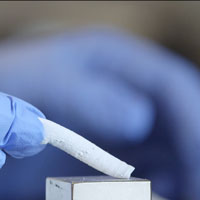 Led by Dr. Brandon Tefft, the Cardiovascular Regenerative Engineering Laboratory, or CaRE Lab, develops living tissue replacements for cardiovascular structures using advanced technologies, such as 3D Bioprinting. Their work focusses on developing next-generation treatments for cardiovascular diseases.
Led by Dr. Brandon Tefft, the Cardiovascular Regenerative Engineering Laboratory, or CaRE Lab, develops living tissue replacements for cardiovascular structures using advanced technologies, such as 3D Bioprinting. Their work focusses on developing next-generation treatments for cardiovascular diseases.
Technical Themes: Medical Devices & Bioinstrumentation | Molecular, Cellular & Tissue Engineering
Clinical Applications: Cardiovascular, Regenerative Medicine
Lab Director: Dr. Brandon Tefft
BME Collaborator(s): Dr. John LaDisa
Computational Lung Physiology Laboratory
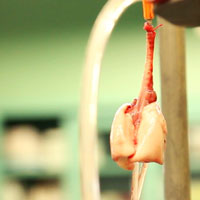 The Computational Lung Physiology Laboratory, or CLPL, develops experimental and computational strategies to investigate lung physiology at all levels—from molecular, to cellular, to whole-organ and body. Their goal is to identify mechanisms and processes involved in lung diseases and injuries and then develop treatments for those diseases by targeting the elucidated mechanisms.
The Computational Lung Physiology Laboratory, or CLPL, develops experimental and computational strategies to investigate lung physiology at all levels—from molecular, to cellular, to whole-organ and body. Their goal is to identify mechanisms and processes involved in lung diseases and injuries and then develop treatments for those diseases by targeting the elucidated mechanisms.
Technical Themes: Biomedical Imaging | Computational Systems Biology & Medicine
Clinical Application: Pulmonary
Lab Directors: Dr. Said Audi | Dr. Anne Clough
BME Collaborator(s): Dr. Ranjan Dash
Computational Systems Biology Laboratory
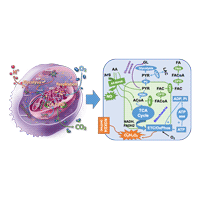 The Computational Systems Biology Laboratory (CSBL) uses an integrated experimental and computational modeling approach to understand kinetic and molecular mechanisms and the associated biochemical driving forces that regulate mitochondrial, cellular, and tissue/organ function and how malfunctions in the mitochondrial and cellular machinery lead to tissue/organ dysfunctions and pathogenesis of different diseases.
The Computational Systems Biology Laboratory (CSBL) uses an integrated experimental and computational modeling approach to understand kinetic and molecular mechanisms and the associated biochemical driving forces that regulate mitochondrial, cellular, and tissue/organ function and how malfunctions in the mitochondrial and cellular machinery lead to tissue/organ dysfunctions and pathogenesis of different diseases.
Technical Themes: Computational Systems Biology & Medicine | Molecular, Cellular & Tissue Engineering
Clinical Applications: Cancer, Cardiovascular, Metabolic Disease, Pulmonary
Lab Director: Dr. Ranjan Dash
Functional MRI Research Laboratory
 Led by Dr. Kristina Ropella, the Functional MRI Research Laboratory (fMRI Lab) specializes in the use of functional magnetic resonance imaging, or fMRI, to assess brain function. Researchers in the Functional MRI Research Laboratory create imaging strategies, sequences, and instrumentation related to fMRI. This specialization may include neuroscience and vision research.
Led by Dr. Kristina Ropella, the Functional MRI Research Laboratory (fMRI Lab) specializes in the use of functional magnetic resonance imaging, or fMRI, to assess brain function. Researchers in the Functional MRI Research Laboratory create imaging strategies, sequences, and instrumentation related to fMRI. This specialization may include neuroscience and vision research.
Technical Themes: Biomedical Imaging
Clinical Application: Cardiovascular
Lab Director: Dr. Kristina Ropella
Integrative Neural Engineering and Rehabilitation Laboratory
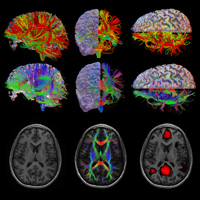 Led by Dr. Brian Schmit, investigators at the Integrative Neural Engineering and Rehabilitation Laboratory, also known as INERL, have access to six separate facilities designed to facilitate research at the cross-section of biomechanics, neural and rehabilitation engineering.
Led by Dr. Brian Schmit, investigators at the Integrative Neural Engineering and Rehabilitation Laboratory, also known as INERL, have access to six separate facilities designed to facilitate research at the cross-section of biomechanics, neural and rehabilitation engineering.
Technical Themes: Biomechanics & Rehabilitation Bioengineering | Biomedical Imaging | Neural Engineering & Neurorehabilitation
Clinical Applications: Cardiovascular, Musculoskeletal, Neuroscience, Orthopaedics, Rehabilitation
Lab Director: Dr. Brian Schmit
BME Collaborator(s): Dr. Tanya Onushko
Integrative Neural Systems Laboratory
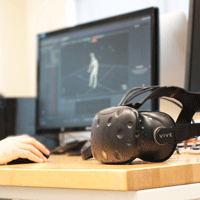 Led by Dr. Scott Beardsley, the Integrative Neural Systems Laboratory (INSL) combines human behavioral studies with multimodal brain imaging and computational modeling to investigate the brain networks that control visually guided movement and determine how neurological diseases impact brain structure and function.
Led by Dr. Scott Beardsley, the Integrative Neural Systems Laboratory (INSL) combines human behavioral studies with multimodal brain imaging and computational modeling to investigate the brain networks that control visually guided movement and determine how neurological diseases impact brain structure and function.
Technical Themes: Biomedical Imaging | Neural Engineering & Neurorehabilitation
Clinical Applications: Musculoskeletal, Neuroscience, Orthopaedics, Rehabilitation
Lab Director: Dr. Scott Beardsley
BME Collaborator(s): Dr. Einat Liebenthal | Dr. Robert Scheidt | Dr. Brian Schmit | Dr. Phil Voglewede
Clinical Collaborators: Rene Andrade-Machado, MD, PhD, Medical College of Wisconsin, Children's Wisconsin; Raquel Farias-Moeller, MD, Medical College of Wisconsin, Children's Wisconsin; Matthew Harmelink, MD, Medical College of Wisconsin; Ahmed Obeidat, MD, PhD, Medical College of Wisconsin; Pradeep Javarayee, MD, Medical College of Wisconsin, Children's Wisconsin; Manoj Raghavan, MD, PhD, Medical College of Wisconsin; Wei-Liang Chen, MD, Children's Research Institute, Children's National Hospital
Learn more about the INSL
Laboratory for Translational, Experimental & Computational Cardiovascular Research
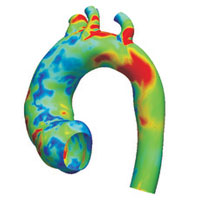 CV T.E.C. investigates of cardiovascular disease from the perspective of hemodynamics, vascular biomechanics and cellular mechanisms. The ultimate goal of this research is to create programs that improve the quality of life for patients with cardiovascular disease by developing new medical device, procedural, or pharmacological initiatives.
CV T.E.C. investigates of cardiovascular disease from the perspective of hemodynamics, vascular biomechanics and cellular mechanisms. The ultimate goal of this research is to create programs that improve the quality of life for patients with cardiovascular disease by developing new medical device, procedural, or pharmacological initiatives.
Technical Theme: Computational Systems Biology & Medicine
Clinical Application: Cardiovascular
Marquette Visualization Laboratory
 Co-directed by Drs. Robert Cooper and Adam Greenberg, the Marquette Visualization Laboratory, or VisLab, works to demonstrate how visualization technology can be used in learning, research, and industry. By providing users with experiences within a realistic environment, VisLab is able to promote active learning, critical thinking, decision making, and improved performance.
Co-directed by Drs. Robert Cooper and Adam Greenberg, the Marquette Visualization Laboratory, or VisLab, works to demonstrate how visualization technology can be used in learning, research, and industry. By providing users with experiences within a realistic environment, VisLab is able to promote active learning, critical thinking, decision making, and improved performance.
Technical Theme: Biomedical Imaging
Clinical Applications: Any
Lab Directors: Dr. Robert Cooper | Dr. Adam Greenberg
Motion Analysis Center at Shriners
 Led by Dr. Karen Kruger, co-director of the Marquette-MCW Orthopaedic and Engineering Rehabilitation Center, the Motion Analysis Center at Shriners Children's uses advanced orthopaedic technologies to assess gait kinetics and kinematics, balance, and upper extremity motion in children, with a goal of diagnosing orthopaedic abnormalities and providing advanced therapeutic options for children suffering from the same.
Led by Dr. Karen Kruger, co-director of the Marquette-MCW Orthopaedic and Engineering Rehabilitation Center, the Motion Analysis Center at Shriners Children's uses advanced orthopaedic technologies to assess gait kinetics and kinematics, balance, and upper extremity motion in children, with a goal of diagnosing orthopaedic abnormalities and providing advanced therapeutic options for children suffering from the same.
Technical Themes: Biomechanics & Rehabilitation Bioengineering | Medical Devices & Bioinstrumentation
Clinical Applications: Musculoskeletal, Orthopaedics, Rehabilitation
Lab Directors: Dr. Gerald Harris | Dr. Karen Kruger
Clinical Collaborators: Peter Smith, MD, Shriners Children's; Haluk Altiok, MD, Shriners Children's; Kelsey Davidson, MD, Shriners Children's; Joseph Krzak, PT, PhD, Shriners Children's
Nanomedicine and Image-guided Interventions Laboratory
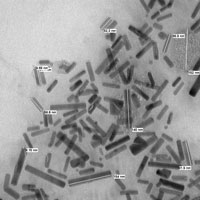 The Nanomedicine and Image-Guided Interventions Laboratory (NIGIL) investigates nanoparticles, light transport in tissue, and the integration of optical and multimodal imaging and remotely triggered nanotechnologies in its efforts to develop minimally invasive and non-toxic diagnostic and therapeutic technologies directed at cancer, pulmonary and infectious disease, and other vascular pathologies.
The Nanomedicine and Image-Guided Interventions Laboratory (NIGIL) investigates nanoparticles, light transport in tissue, and the integration of optical and multimodal imaging and remotely triggered nanotechnologies in its efforts to develop minimally invasive and non-toxic diagnostic and therapeutic technologies directed at cancer, pulmonary and infectious disease, and other vascular pathologies.
Technical Themes: Biomedical Imaging | Computational Systems Biology & Medicine | Neural Engineering & Neurorehabilitation
Clinical Applications: Cancer, Drug Delivery, Metabolic Disease, Otolaryngology, Pulmonary
Lab Director: Dr. Amit Joshi
Neural Engineering & Modulation Laboratory
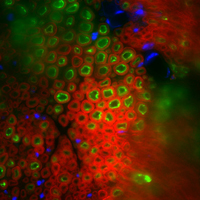 The Neural Engineering & Modulation Laboratory (NEMo Lab) employs a combination of neurophysiology, optogenetics, viral gene therapy, and optical imaging techniques to develop novel neuroprosthetic and gene therapy approaches to alleviate motor deficits caused by conditions such as spinal cord injury or amyotrophic lateral sclerosis.
The Neural Engineering & Modulation Laboratory (NEMo Lab) employs a combination of neurophysiology, optogenetics, viral gene therapy, and optical imaging techniques to develop novel neuroprosthetic and gene therapy approaches to alleviate motor deficits caused by conditions such as spinal cord injury or amyotrophic lateral sclerosis.
Technical Theme: Neural Engineering & Neurorehabilitation
Clinical Applications: Neuroscience, Orthopaedics, Trauma
Lab Director: Dr. Jordan Williams
NeuroMotor Control Laboratory
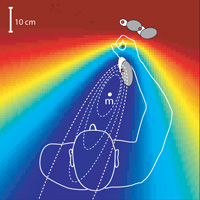 By gaining a better understanding of how the brain uses sensory information to optimize the control of motion of the arms and hands, the NeuroMotor Control Laboratory (NMCL) seeks to provide the knowledge and tools needed to develop and deliver individualized training or therapeutic interventions that optimize motor performance throughout the lifespan.
By gaining a better understanding of how the brain uses sensory information to optimize the control of motion of the arms and hands, the NeuroMotor Control Laboratory (NMCL) seeks to provide the knowledge and tools needed to develop and deliver individualized training or therapeutic interventions that optimize motor performance throughout the lifespan.
Technical Themes: Biomechanics & Rehabilitation Bioengineering | Computational Systems Biology & Medicine | Medical Devices & Bioinstrumentation | Neural Engineering & Neurorehabilitation
Clinical Applications: Cardiovascular, Musculoskeletal, Neuroscience, Rehabilitation, Vision
Lab Director: Dr. Robert Scheidt
BME Collaborator(s): Dr. Scott Beardsley
Clinical Collaborators: Tina Stoeckmann, DSc, MA, Marquette University; John McGuire, MD, Froedtert & the Medical College of Wisconsin; Kim Bassindale, DPT, Marquette University
Ocular and Computer Vision Laboratory
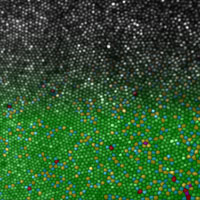 Led by Dr. Robert Cooper, the Ocular and Computer Vision Laboratory, or OCVL, is working to understand the underpinnings of vision in health and disease by imaging the retina with advanced, non-invasive imaging devices—such as the adaptive optics scanning laser ophthalmoscope—and analyzing the resultant images with state-of-the-art computer vision techniques.
Led by Dr. Robert Cooper, the Ocular and Computer Vision Laboratory, or OCVL, is working to understand the underpinnings of vision in health and disease by imaging the retina with advanced, non-invasive imaging devices—such as the adaptive optics scanning laser ophthalmoscope—and analyzing the resultant images with state-of-the-art computer vision techniques.
Technical Themes: Biomedical Imaging | Neural Engineering & Neurorehabilitation
Clinical Application: Vision
Lab Director: Dr. Robert Cooper
BME Collaborator(s): Dr. Joseph Carroll | Dr. Baseer Ahmad | Dr. Adam Greenberg
Clinical Collaborators: Baseer Ahmad, MD, Medical College of Wisconsin, Froedtert Eye Institute; Thomas Connor, MD, Medical College of Wisconsin, Froedtert Eye Institute; Kimberly Stepien, MD, University of Wisconsin—Madison, McPherson Eye Research Institute
Orthopaedic and Rehabilitation Engineering Center
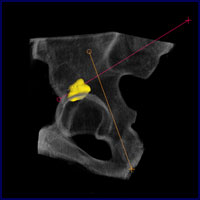 The Orthopaedic and Rehabilitation Engineering Center, also known as OREC, supports and coordinates the efforts of laboratories from Marquette University, the Medical College of Wisconsin, and affiliative organizations conducting research in orthopaedic biomechanics, biomaterials, rehabilitation engineering, and human motion analysis.
The Orthopaedic and Rehabilitation Engineering Center, also known as OREC, supports and coordinates the efforts of laboratories from Marquette University, the Medical College of Wisconsin, and affiliative organizations conducting research in orthopaedic biomechanics, biomaterials, rehabilitation engineering, and human motion analysis.
Technical Theme: Biomechanics & Rehabilitation Bioengineering
Clinical Applications: Musculoskeletal, Orthopaedics, Rehabilitation
Center Director: Dr. Gerald Harris
Lab Directors: Dr. Jessica Fritz | Dr. Karen Kruger | Dr. Jeffrey Toth | Dr. Mei Wang
Pelvic Diagnostics & Therapeutic Laboratory
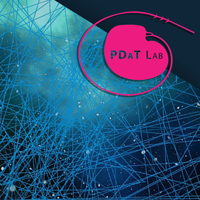
The PDAT Lab focuses on the development of novel therapeutics, particularly electrical stimulation therapies, for treating pelvic floor diseases (with a primary focus on urinary incontinence). To improve therapy design and therapy selection, PDAT is also working on creating new, and improving current, diagnostic tools. Research is conducted at both the pre-clinical and clinical levels.
Technical Themes: Medical Devices & Bioinstrumentation | Neural Engineering & Neurorehabilitation
Clinical Application: Neuroscience
Lab Director: Dr. Jim Hokanson
Clinical Collaborators: Emily Davidson, MD, Medical College of Wisconsin; Corey O'Conner, MD, Medical College of Wisconsin; Claire Yang, MD, University of Washington; Anna Kirby, MD, University of Washington; John DeLancey, MD, University of Michigan; Jon Routh, MD, Duke University; Whitney Hendrickson, MD, University of Utah; Giulia Lane, MD, University of Michigan, David Sheyn, MD, University Hospitals; Cindy Amundsen, MD, Duke University
Rey Laboratory
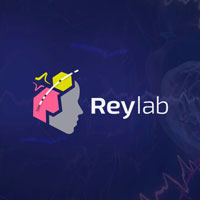 The Rey Laboratory, also known as ReyLab, seeks to answer critical questions in cognitive and clinical neuroscience by capturing recording of neural activity in the human brain. With captured data, ReyLab furthers understanding of epilepsy and human episodic memory while developing new tools for acquisition and analysis of electrophysiological data.
The Rey Laboratory, also known as ReyLab, seeks to answer critical questions in cognitive and clinical neuroscience by capturing recording of neural activity in the human brain. With captured data, ReyLab furthers understanding of epilepsy and human episodic memory while developing new tools for acquisition and analysis of electrophysiological data.
Technical Themes: Medical Devices & Bioinstrumentation | Neural Engineering & Neurorehabilitation
Clinical Application: Neuroscience
Lab Director: Dr. Hernan Rey
BME Collaborator(s): Dr. Jordan Williams
Sensory Neuroscience, Attention and Perception Laboratory
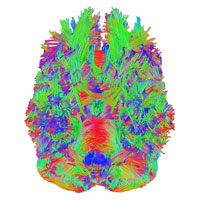 With the use of psychophysical and neuroimaging methods—including MRI, transcranial magnetic stimulation diffusion spectrum imaging and computation modeling—the Sensory Neuroscience, Attention and Perception Laboratory, or SNAP Lab, studies the neurobiology of attention and perception in the visual, auditory, and olfactory domains to understand perception's effect on human behavior.
With the use of psychophysical and neuroimaging methods—including MRI, transcranial magnetic stimulation diffusion spectrum imaging and computation modeling—the Sensory Neuroscience, Attention and Perception Laboratory, or SNAP Lab, studies the neurobiology of attention and perception in the visual, auditory, and olfactory domains to understand perception's effect on human behavior.
Technical Themes: Biomedical Imaging | Neural Engineering & Neurorehabilitation
Clinical Applications: Cancer, Neuroscience, Orthopaedics, Vision
Lab Director: Dr. Adam Greenberg
Clinical Collaborators: Rachel Phelan, MD, MPH, Medical College of Wisconsin; Michael Harris, MD, Medical College of Wisconsin; Amanda Kong, MD, MS, FACS, FSSO, DABS, Medical College of Wisconsin; Denise Uyar, MD, Medical College of Wisconsin; Laura Umfleet, PsyD, ABBP, Medical College of Wisconsin; Ann Nattinger, MD, MPH, Medical College of Wisconsin; Theresa Mikhailov, MD, Medical College of Wisconsin
Tissue Regenerative Engineering Laboratory
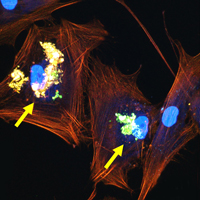 In an effort provide advanced therapeutic options for such conditions as birth defects, bone disorders, liver and vascular diseases, the Tissue Regenerative Engineering Laboratory seeks to develop bio-functional engineered tissues. To do this, the TRE Lab will first develop a greater understanding of the biological and molecular processes involved in regenerative progression.
In an effort provide advanced therapeutic options for such conditions as birth defects, bone disorders, liver and vascular diseases, the Tissue Regenerative Engineering Laboratory seeks to develop bio-functional engineered tissues. To do this, the TRE Lab will first develop a greater understanding of the biological and molecular processes involved in regenerative progression.
Technical Themes: Medical Devices & Bioinstrumentation | Molecular, Cellular & Tissue Engineering
Clinical Applications: Cardiovascular, Drug Delivery, Regenerative Medicine
Lab Director: Dr. Bo Wang
Clinical Collaborators: Kant Lin, MD, Children's Wisconsin; Sameer Shakir, MD, Children's Wisconsin
Trauma Biomechanics Laboratory
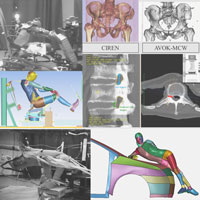 Current studies of the Trauma Biomechanics Laboratory, or TBM Lab, leverage insight from real-world crash database review, sled testing, finite element computational modeling, and statistical probability analysis to investigate the underlying mechanisms for musculoskeletal injuries and develop injury risk curves.
Current studies of the Trauma Biomechanics Laboratory, or TBM Lab, leverage insight from real-world crash database review, sled testing, finite element computational modeling, and statistical probability analysis to investigate the underlying mechanisms for musculoskeletal injuries and develop injury risk curves.
Technical Themes: Biomechanics & Rehabilitation Bioengineering
Clinical Applications: Musculoskeletal, Neuroscience, Trauma
Lab Director: Dr. Karthik Somasundaram
BME Collaborators: Dr. Frank Pintar, Dr. Brian Stemper, Dr. Narayan Yoganandan
Wisconsin Crash Injury Research Engineering Network Center
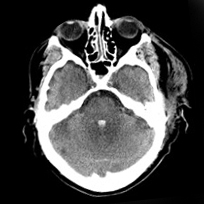 Operated under a contract from the National Highway Traffic Safety Administration and in collaboration with CIREN Centers around the nation, the Wisconsin Crash Injury Research Engineering Center, or Wisconsin CIREN Center, provides expert analysis and reconstruction of crash case histories, offering novel insight into the biomechanics of injury to humans in motor vehicle accidents.
Operated under a contract from the National Highway Traffic Safety Administration and in collaboration with CIREN Centers around the nation, the Wisconsin Crash Injury Research Engineering Center, or Wisconsin CIREN Center, provides expert analysis and reconstruction of crash case histories, offering novel insight into the biomechanics of injury to humans in motor vehicle accidents.
Technical Theme: Biomechanics & Rehabilitation Bioengineering
Clinical Applications: Musculoskeletal, Neuroscience, Trauma
Program Director: Dr. Frank Pintar
BME Collaborator(s): Dr. Karthik Somasundaram
Zablocki VA Medical Center Laboratories
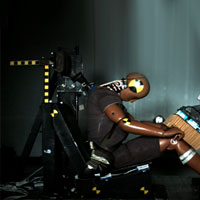 The Zablocki Veterans Administration Medical Center Laboratories, also known as ZVAMC Laboratories, specialize in neuroscience and biomechanics of trauma to the spine. Ongoing investigations include vehicle crashworthiness, computational modeling of injury to the spine, preclinical traumatic brain injury, brain-computer interfaces for spinal cord injury, and more.
The Zablocki Veterans Administration Medical Center Laboratories, also known as ZVAMC Laboratories, specialize in neuroscience and biomechanics of trauma to the spine. Ongoing investigations include vehicle crashworthiness, computational modeling of injury to the spine, preclinical traumatic brain injury, brain-computer interfaces for spinal cord injury, and more.
Technical Theme: Biomechanics and Rehabilitation Bioengineering
Clinical Applications: Musculoskeletal, Neuroscience, Trauma, Orthopaedics
BME Collaborators: Dr. Shekar Kurpad | Dr. Frank Pintar | Dr. Karthik Somasundaram | Dr. Brian Stemper | Dr. Jordan Williams | Dr. Narayan Yoganandan
Shared Resources
Faculty, students and collaborators of the Marquette University and Medical College of Wisconsin Joint Department of Biomedical Engineering enjoy access to shared equipment and facilities provided by both institutions, as well as partner institutions in Milwaukee and greater Southeast Wisconsin.
- Athletic and Human Performance Research Center at Marquette
- Behavioral Core at Marquette
- Collaboratory Resources at Marquette
- Core Facilities and Services at Versiti Blood Research Institute
- Cores, Facilities and Shared Resources at Medical College of Wisconsin
- Human Performance Assessment Core (HPAC) at Marquette
- Molecular and Cellular Core at Marquette
Looking for something else?
Try filtering by Research Track, or view Recent Publications.

